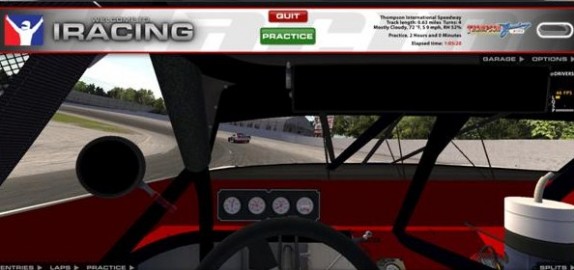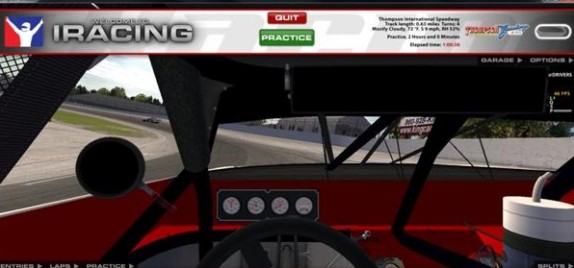
Circle Track School – Speed and Quickness
July 11th, 2014 by JaimeB
Sometime last year (!), my first article for the service had to do with line of sight behind the wheel; where and how you should be looking down the track in order to effectively race and avoid the inevitable; to become a survivor instead of a victim. With the long-awaited release of the Super Late Model, iRacers have been flocking to the short tracks in droves to play with the cool kids on some of the most charming tracks the service has to offer; except for one very, very big problem: this is a “Super” Late Model, with a chassis built like a railroad, more horsepower than Superman, more aero-dependency than an F-22, and sprint car-like tires. In other words, everything a racer wants: speed.
What’s inherently understood but not obvious is that speed and quickness are two entirely different things. What’s the difference? Well, say you’re taking a lap around Michigan, somewhere around 200+ mph. You’re going fast, but relatively speaking, things happen slowly. The corners take a while to “develop,” and the straights give you time to mentally prepare and sometimes to even take a nap and eat a sandwich. With the Super Late Model in its natural habitat of a short track, you might top out at only 130mph, but things happen so quickly that there’s barely any time to react to what might happen!
In other words, the Super Late Model is quick. Some around the iRacing office in Massachusetts would call it “wicked quick.” It’s so quick that it’s at least a full second faster than the next oval car on the service.
In my first article, I cited the Gen6 car at the fishbowl of Bristol Motor Speedway, the home of sub 15-second laps. Here, I demonstrated how looking out of the correct part of the windshield aids in turning repetitive, clean laps in traffic. With the release of the Super Late Model, this topic is more important than ever because the Super Late Model is significantly quicker than the Gen6 car!
So far, the series has visited New Smyrna, Irwindale, Bristol, and is going to be at Lanier in the coming week. At each of these four tracks, lap times are so much quicker than the Gen6 (relatively speaking), that it is a safe assumption that the Super Late Model is the easiest oval car to lap . . . but also the most difficult oval car to sim race. It takes an immense amount of concentration to race this car, and in order to do it effectively, your eyes must be looking far ahead of the track. However, at a place like Lanier, where now the laps are sub-13 seconds (!), how are you supposed to avoid the inevitable track-blocking pileup in front of you?
The general rule of thumb for safe, every day driving, is to keep your mind ahead one car-length for every ten miles per hour. At a highway speed of 65 mph, that’s 6.5 car lengths, or at least 104 feet. At that speed, you travel 104 feet in about 1.1 seconds! At faster speeds of the Super Late (130-150mph), that’s easily a 2.5 second “safe” driving gap.
You must be looking at least two seconds ahead on the track at all times.
So at a place like Thompson, how far is two seconds?

Fig 1. This is only 1.3 seconds ahead. Keeping your eyes glued to this car could mean you don’t see the pileup in front.

Fig 2. This is about two seconds ahead. Keep your eyesight between the window net and the A-post to miss the wrecks!
Might this seem extreme? In a sense, it is, but the principle is not. Keeping “eyes up” is the first principle to not running into street lamps, getting hit with a foul ball, or just getting in a fender bender (aka “race ender”).
Fig 3. In London, lampposts are padded so people watching their phones instead of where they walk don’t get hurt.
So are you worried about sim racing with these new eyes? Don’t worry about it and trust your peripheral vision. You’ll find that if you keep focused far down the track that your instincts will kick-in, and you’ll keep it off the wall and hit your apexes without even looking at where the car is going. Good racers always look (and therefore think about) where the car is going next; not where the car is now.
On a closing note, a good racer is not going to just keep an eye on the person in front, but rather anticipate what the driver in front sees as well. If you can see trouble at the same time as they do, you stand a much greater chance of missing that race-ending pileup that so easily happens in the Super Late.
















































